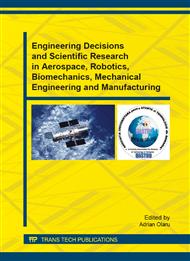[1]
F. Barbir, Introduction, in PEM Fuel Cells: Theory and Practice, London, Elsevier Academic Press, Elsevier Inc., 2005, p.8.
Google Scholar
[2]
A. J. Del Real, A. Arce and C. Bordons, Development and experimental validation of a PEM fuel cell dynamic model, Journal of Power Sources, no. 173, p.310–324, (2007).
DOI: 10.1016/j.jpowsour.2007.04.066
Google Scholar
[3]
F. Barbir, Fuel Cell Electrochemistry, in PEM Fuel Cells: Theory and Practice, London, Elsevier Academic Press, Elsevier Inc., 2005, pp.33-72.
DOI: 10.1016/b978-012078142-3/50004-5
Google Scholar
[4]
J. Newman, Electrochemical Systems, NJ: Prentice Hall, Englewood Cliffs, (1991).
Google Scholar
[5]
T. Springer, T. Zawodinski and S. Gottesfeld, Polymer Electrolyte Fuel Cell Model, Journal of Electrochemical Society, vol. 138, no. 8, pp.2334-2342, (1991).
DOI: 10.1149/1.2085971
Google Scholar
[6]
J. T. Zawodinski, C. Lopez and R. Jestel, A comparative study of water uptake by and transport through ionomeric fuel cell membranes, Journal of the Electrochemical Society, vol. 140, p.1981, (1993).
DOI: 10.1149/1.2220749
Google Scholar
[7]
F. Barbir, Main Cell Components, Materials Properties and Processes, in PEM Fuel Cells: Theory and Practice, London, Elsevier Academic Press, Elsevier Inc., 2005, pp.73-113.
DOI: 10.1016/b978-012078142-3/50005-7
Google Scholar
[8]
T. Colinart, A. Chenu and S. Didierjean, Experimental study on water transport coefficient in Proton Exchange Membrane Fuel Cell, Journal of Power Sources, vol. 190, pp.230-240, (2009).
DOI: 10.1016/j.jpowsour.2009.01.038
Google Scholar
[9]
W. Dai, H. Wang and X. -Z. Yuan, A review on water balance in the membrane electrode assembly of proton exchange membrane fuel cells, International Journal of Hydrogen Energy, vol. 34, pp.9461-9478, (2009).
DOI: 10.1016/j.ijhydene.2009.09.017
Google Scholar
[10]
T. V. Nguyen and R. E. White, A Water and Heat Management Model for Proton-Exchange-Membrane Fuel Cells, Journal of the Electrochemical Society, pp.2178-2186, (1993).
DOI: 10.1149/1.2220792
Google Scholar
[11]
W. Wagner and A. Pruss, International Equations for the Saturation Properties of Ordinary Water Substance., Journal of Physical and Chemical Reference Data, vol. 22, no. 3, pp.727-787, (1993).
DOI: 10.1063/1.555926
Google Scholar


